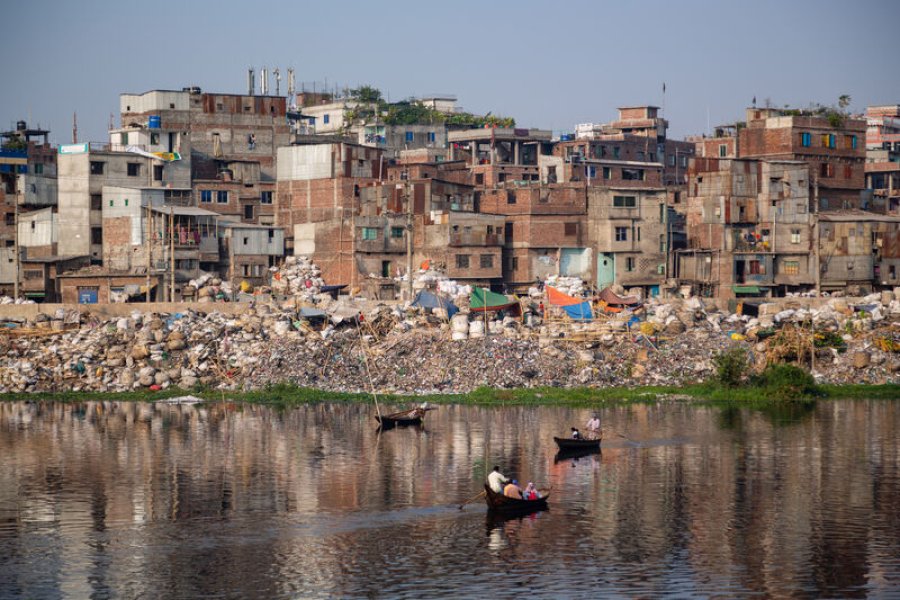
River taxis ply the waters across the Buriganga and the districts of Islambag and Koyla Ghat
Safe water, sanitation, and hygiene (WASH) are hypothesized to reduce the emergence and spread of antimicrobial resistance (AMR) in multiple ways. This includes through limiting the transmission of resistant microorganisms, reducing symptomatic infection and the subsequent use of antimicrobials, and by safely storing, treating, and disposing of faecal wastes which can be hotspots for the evolution of AMR. A previous ecological study exploring the relationship between water and sanitation access and antimicrobial resistant genes (ARGs) in human faeces across 26 countries found that increased access to improved services was associated with lower ARG abundance, particularly in crowded urban areas. Antibiotic use tends to be more common in settings with poor access to safe WASH, with young children in many low- and middle-income countries receiving an average of five antibiotic prescriptions a year. In some settings, such as Bangladesh, antibiotic use has been reported to be even more frequent, with children receiving antibiotics an average of 10 times per year over the first two years of life. This level of use is particularly alarming when compared with antibiotic usage in some high-income countries like the United States, where children take an average of less than two antibiotic courses per year.
A new study out this month assessed whether a WASH intervention, with or without a concurrent nutritional intervention, reduced caregiver-reported antibiotic use among children under 5 across two rural settings in Bangladesh and Kenya. Previous work in these study populations demonstrated that children receiving the WASH and nutrition interventions in Bangladesh had a lower prevalence of reported diarrhoea and respiratory infections than controls, while children receiving the nutrition intervention had improved linear growth in both Bangladesh and Kenya. Chronic undernutrition, or poor linear growth, has been linked to reduced immune system capacity and increased susceptibility to future infections. The authors hypothesized that these reductions in poor health outcomes may result in a reduced antibiotic use among the intervention participants.
Antibiotic use was common in the study settings with over half of all caregivers in both sites reporting antibiotic use in the previous three months. In Bangladesh, the interventions resulted in a 10-14% reduction in the reported use of antibiotics at least once in the 90-days prior to data collection, as well as a 26-35% reduction in reports of multiple instances of antibiotic use over the same period. This corresponded to a reduction of 0.17 – 0.21 episodes and one fewer days of antibiotic use over a three-month period. There was no effect of any intervention (WASH, nutrition, or WASH and nutrition combined) on reported antibiotic use in Kenya. A related mediation analysis assessed the mechanisms or pathways through which the interventions may affect antibiotic use, and found that the observed reductions in Bangladesh were at least partially mediated by a decrease in reported diarrhoea, acute respiratory infections, and enteric virus carriage among intervention children. These studies provide evidence of the important role of WASH (and nutrition) in tacking AMR through reductions in infectious disease and subsequent antibiotic use.
If you enjoyed this article and would like to build a career in global health, we offer a range of MSc programmes covering health and data, infectious and tropical diseases, population health, and public health and policy.
Available on campus or online, including flexible study that works around your work and home life, be part of a global community at the UK's no.1 public health university.
